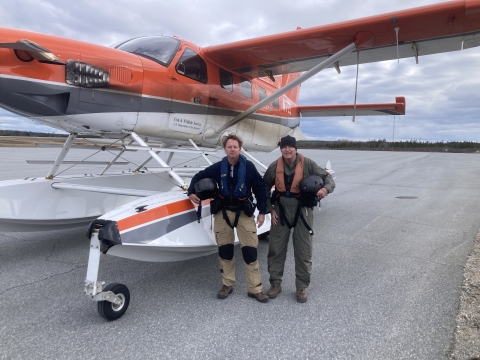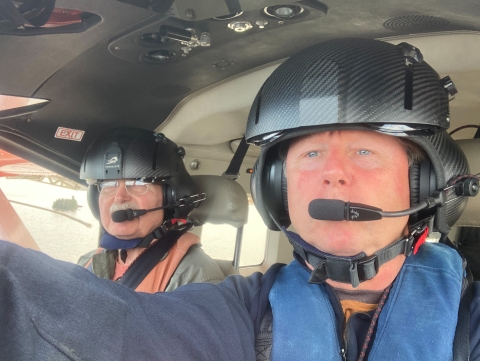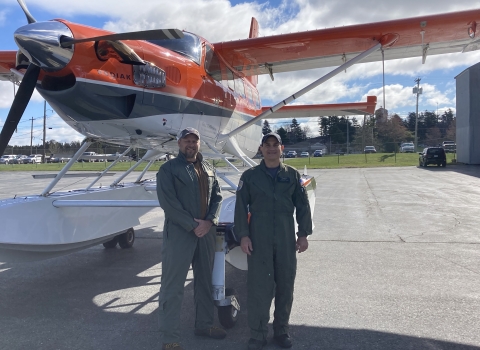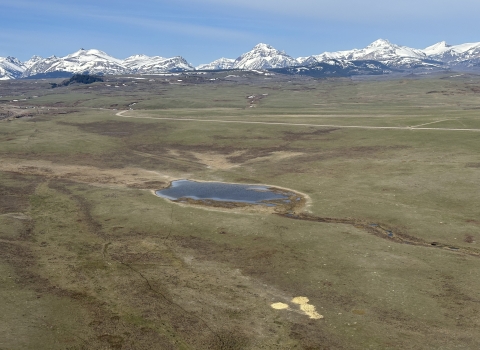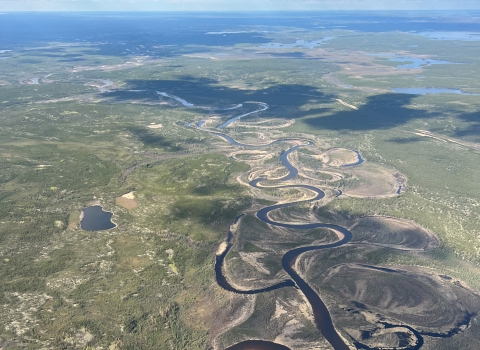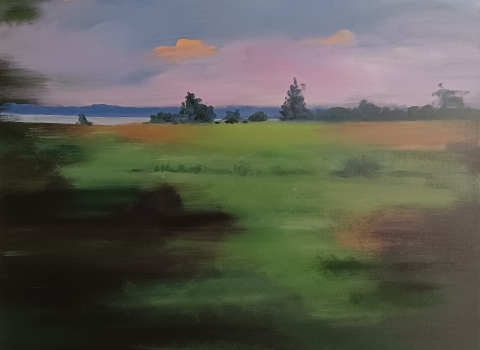A warmer than usual spring led us to an earlier start than we normally have for the Waterfowl Breeding Population and Habitat Survey. Typically, our goal is to start the survey when early nesting species like mallards and black ducks are established on breeding territories and later migrants have moved on to the north. However, in the agricultural southern portions of this crew area of Quebec and Ontario, many wetland habitats are forest or shrub wetlands so it’s also important to start flying before the trees start leafing out, which can affect our ability to detect birds. Fortunately, everything came together for us, and we arrived in Kingston, Ontario on a full week earlier than last year and almost two weeks earlier than in 2022.
We began planning for this arrival months before hoping to be ready for every contingency. Usually I start planning for this in January. This year It hit me in late January when I was at duck camp during a mid-morning lull sitting in our boat on the Mississippi River south of Memphis. So I pulled out my phone (hoping to be interrupted by my partner ripping off a Highball) and started a “to do” list in preparation for May.
However, even with all the preparations we make, sometimes things happen that can slow you down and this year it started with a small mechanical issue. If I haven’t mentioned this in previous blogs, the people in Ontario and Quebec are great to work with! We found ourselves in Muskoka, Ontario with the cowling (front hood of the plane) open discussing our options, and before we could even get tied down, we had folks coming out to see if they could help. The folks from Ontario Ministry of Natural Resources and Forestry who have an aviation unit located on the field were a great help with logistics, so what I feared would be a week delay, only turned out only to be a day.
I started the survey with Andrew Zilka (pictured during a over wing fueling stop) and approximately midway through I was joined by John Bidwell for the remainder. It was quite a contrast working with such different perspectives and talents: Andrew is a volunteer and newly graduated Wildlife Biologist who is also a Pilot and a Flight Instructor in Utah; and John (pictured with me next to the plane) retired as a U.S. Fish and Wildlife Service Migratory Bird Biologist Pilot about 12 years ago, having flown this survey numerous times in the past. Both guys were great to work with.
We found the conditions to be mostly normal with some drier areas south of Quebec City and east of Montreal. It was also drier in the north middle and western area of our stratum, which is around the Timmins, Ontario area and west.
Overall conditions were considered good, very similar to last year and quite a bit different than the high water we experienced in 2022. The western Ontario and southern Quebec area we surveyed should be good for waterfowl production.


